Savatiano at Mylonas winery
Deep dive into an underdog grape variety from Greece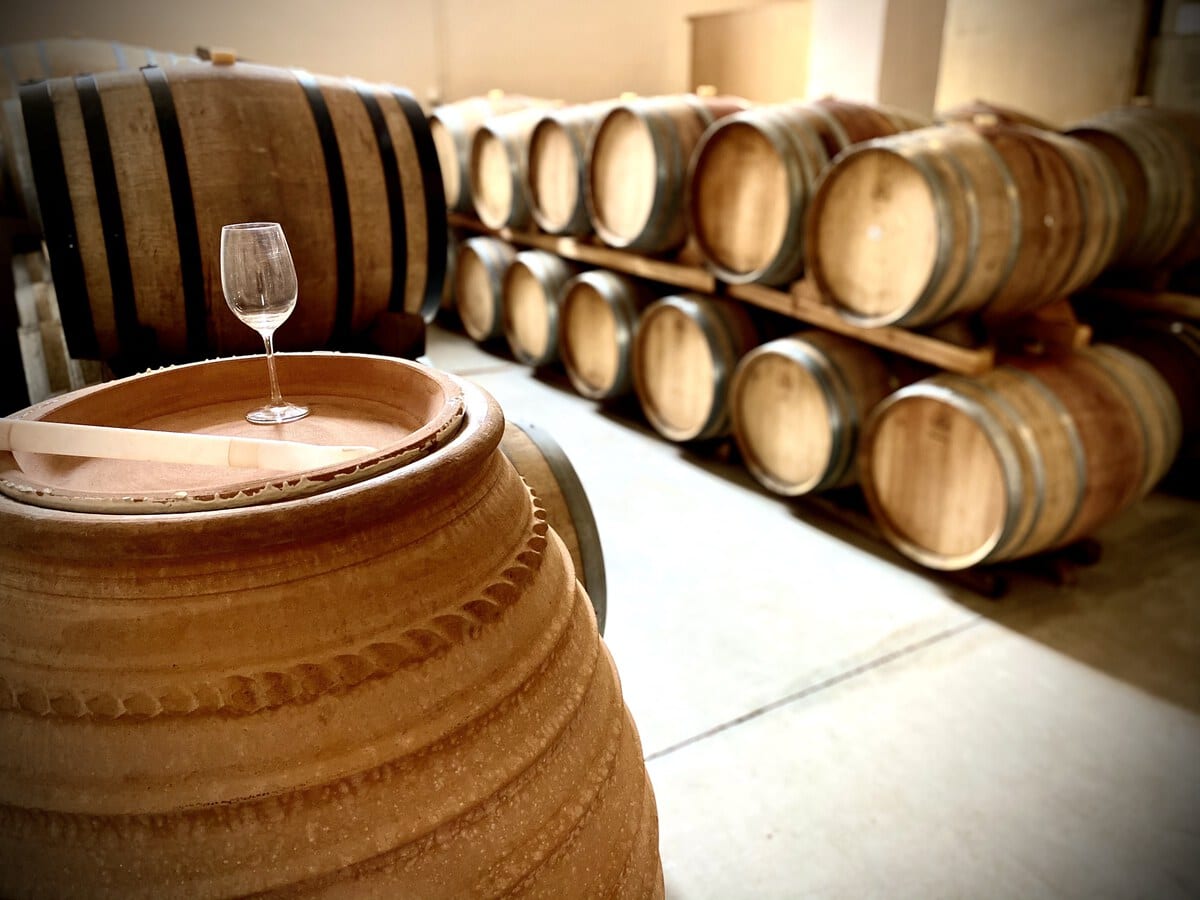
My whole life I’ve been fascinated by the unexplored. Anything off the beaten track would attract me. From holiday destinations to cooking ingredients, I aim to find the hidden gem. I always go for the inconspicuous choice.
When it comes to wine, again, I’m immediately attracted by the low-profile pick. Be it the rare grape variety or the strange vinification method, rest assured, I want to try it.
So it’s no surprise that I got intrigued by Mylonas winery.
They are a rather small winery, producing just under 100k bottle per year. They are based in Attica, not the most well known wine region in Greece. And this is a country that is far from being an international synonym for the drink of Dionysus.
I first spot Mylonas at the London Wine Fair. I look them up and realise they mainly vinify Savatiano. This is a grape variety I vaguely remembered hearing about. Also, I rarely encountered it bottled and that I have no idea how it tastes like.
To me, Mylonas has all the ingredient to be very appealing indeed. And so it is that I book an appointment for a tasting at their winery.
A few days before the meeting I refresh my memory about Greek wine and wine varieties. Of course, I read about Savatiano too!
At Mylonas they do everything with it: current vintage wine, late release bottles, they age it in oak to produced yet another label, they add nothing to it and make a natural wine, they let the grapes sundry to produce a sweet version of it, and let’s not forget… they add pine resin to the must and bottle their retsina!
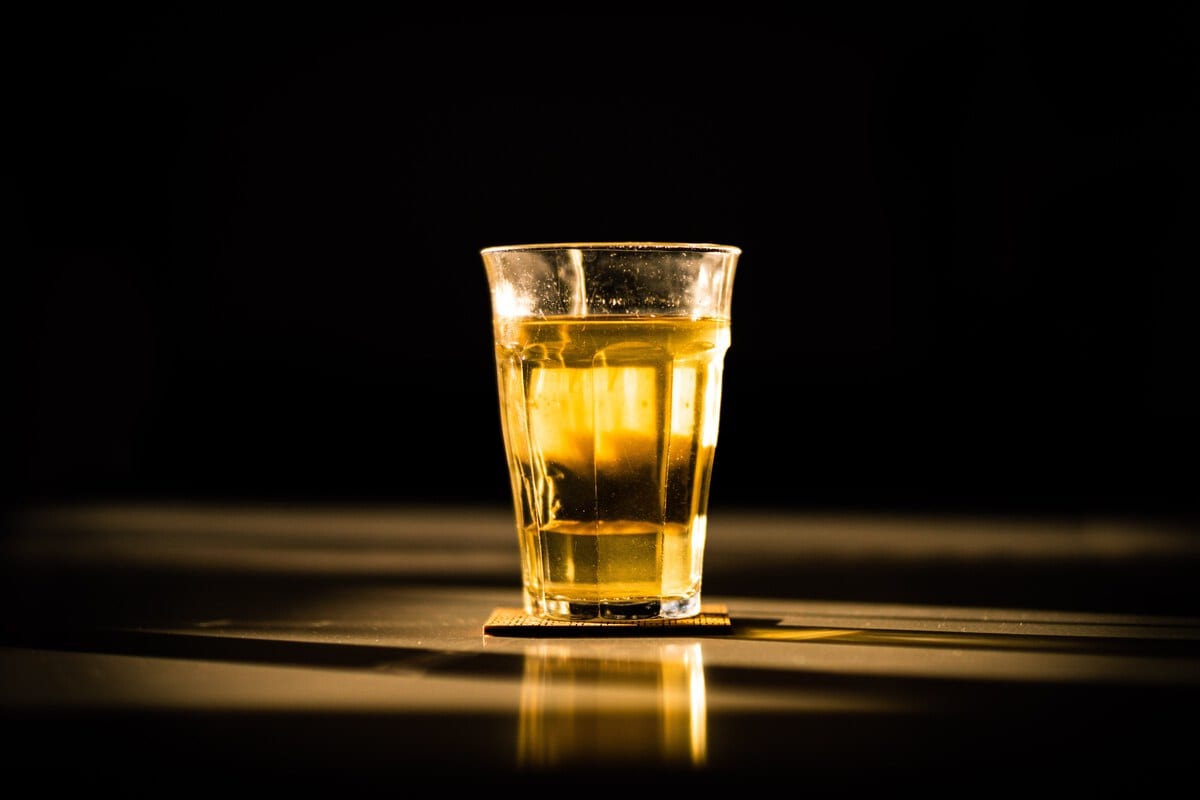
Photo by Michael Fousert
Yes, Savatiano is notorious for being the base grape for retsina, the greek traditional wine fermented in amphora with pine resin. Notorious, as retsina has a bad fame. That of a rather cheap drink causing a pretty hard core hangover. Because of this association, Savatiano is considered a poor grape variety. It’s generally thought to be suitable, at best, to cut a blend and produce loose, unlabelled, table wine.
Only very recently did some wineries start using Savatiano to vinify quality wine. Mylonas is one of those vigneron.
Stamatis Mylonas took the winery over from his dad. Having studied oenology and chemistry, he started experimenting and pushing boundaries. Yet, Stamatis’ new vision for the family winery still had Savatiano at the very centre. At Mylonas more than half of the wine production revolves around this variety.
I’m now all read up and ready. Finally, the day of the appointment at the winery arrives.
I make my way down to Keratea, in the south of Athens where Stamatis welcomes me.
He shows me around the premises, he explains the history of the winery and their philosophy. He shows me their production line and their cellar too. In fact, he tells me, Savatiano has an incredible ageing potential.
We will try some aged Savatiano today, I think I still have a few bottles of 2015…
Says Stamatis.
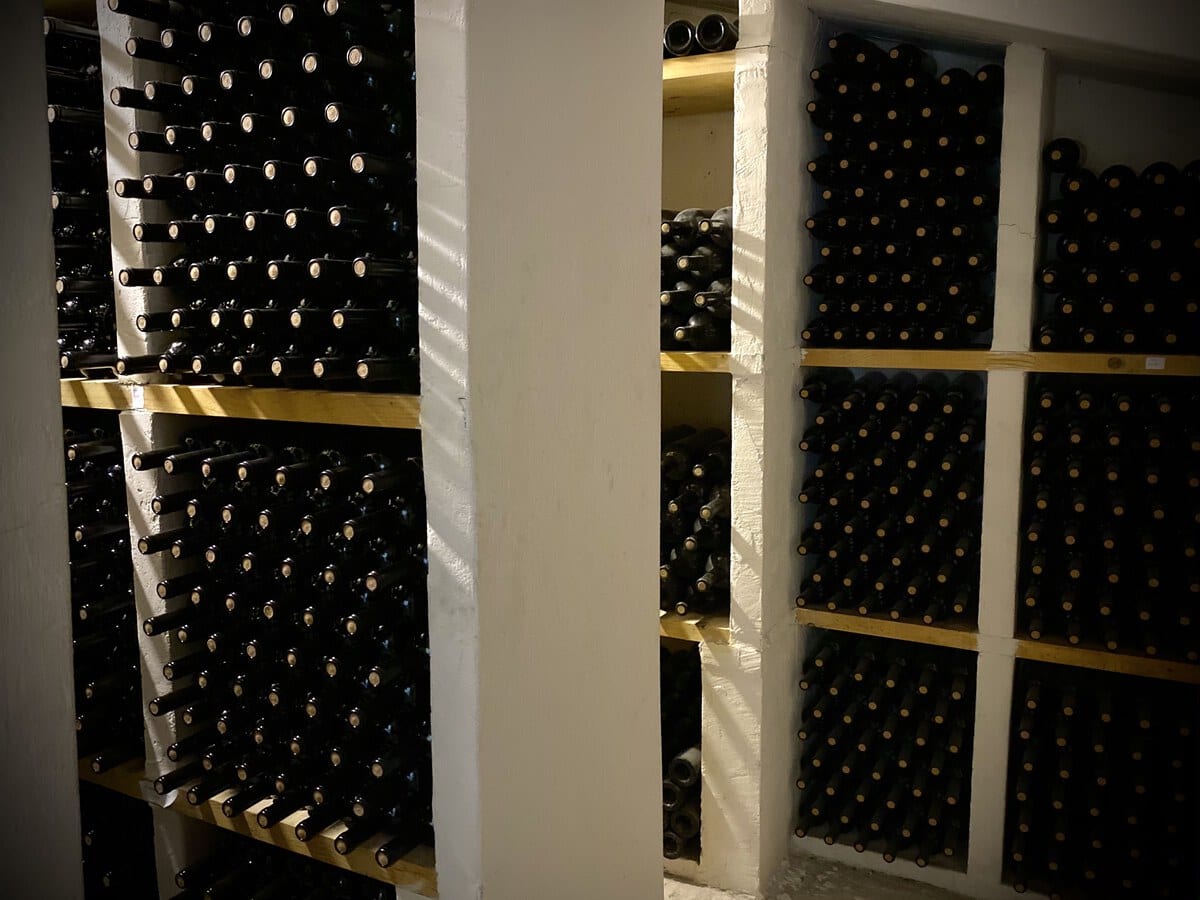
Aged white wine is my not-so-secret sweetheart. I’m SO excited!
Mylonas Savatiano
We approach the tasting station upstairs. As he pulls the first cork, Stamatis explains that the grapes come from different plots of land, scattered all around the Keratea area. The vines are on average 55 year old.
So the Savatiano line up includes a 2020 bottle, a 2019, a 2017, and a 2015 vintage. We start with the youngest wine and work our way down the years.
The 2020 Savatiano has a light golden colour.
On the nose it’s rather floral with some citrus notes and a hint of herbaceousness.
On the palate it’s sapid and fresh.
A nice white wine. Refreshing and great for a summer meal. So young it’s nothing memorable, I must admit. My half glass quickly ends up in the spitter.
Stamatis pours the 2019 vintage.
OK. The nose is definitely more interesting.
A more mature citrusness, candied lemon peel, I’d say.
Then a yogurt note and some mint. There is also a touch of something tropical, let’s call it tinned pineapple.
In the mouth the wine is round and rather long. Pretty nice….
As I empty the glass (in the spitter that is 😉), Stamatis is opening the 2017 bottle and pours me some. Here the bouquet is noticeably more evolved. It opens with a strong rubber note, it’s full and dense. The finish is long.
I start feeling bad for all those tons of Savatiano that have ended up making cheap Retsina over the years. They could have had such a better destiny!!
2015 is the next sample. The nose is very different now. It’s rounder, intense. There is a deep apricot note. Generally it’s very plump and juicy. But it also carries on a creamy, yogurt note. I’m impressed and I say so to Stamatis.
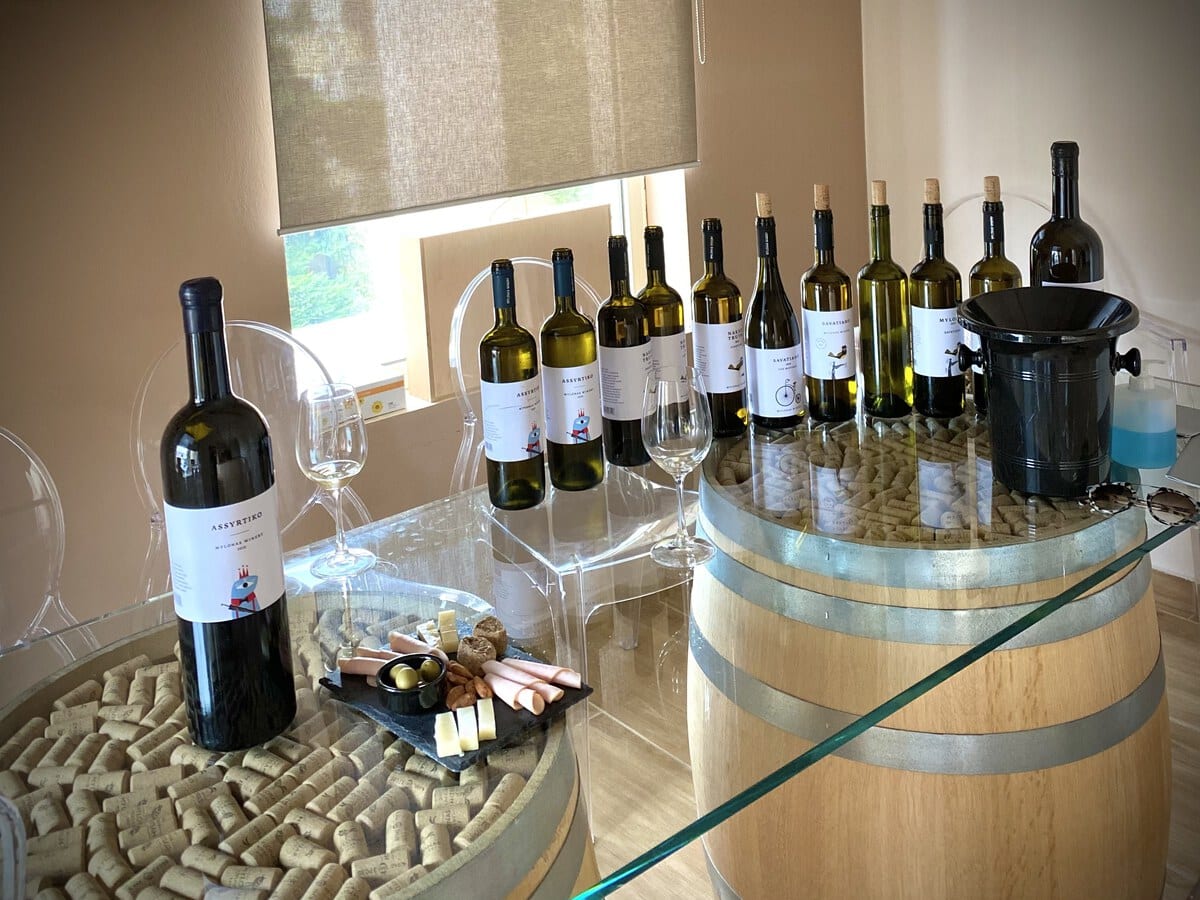
He looks at me and confesses…
I believe I also have a 2012 bottle. There are very few left but it has been long since I last tasted it. Let’s open one together!
Wow.
Yes, please!
The colour is deep golden. The nose is evolved and complex. It opens with rubber and petroleoum. It’s round with a mature apricot note and aromatic with quince. It’s also rather sapid. In the mouth it’s refreshing with mint. It also has a balsamic note of pine resin maybe? (Or is it be the association with Retsina playing a trick on me?)
The finish is long. The wine is excellent.
Stamatis tells me that he has tried 20-year-old Savatiano and it only gets better. I can see that. I will definitely gets some bottles and let them age to experiment!
Naked Truth Savatiano
At Mylonas they also make Savatiano into a natural wine. They add very little sulphites (20 ppm) and let the grapes in contact with the skins for 20 days. They label it as Savatiano Naked Truth.
We are about to try it, again in a vertical tasting including the 2020, 2019 and 2018 vintages.
The 2020 bottle pops open. It’s golden colour, rich and beautiful. The bouquet has notes of quince, yogurt and mint. On the palate it’s refreshing and ever so slightly petillant.
Out of the 2020 vintage I prefer the Naked Truth to the ‘regular’ Savatiano. It’s deeper and more complex. Personal choice though!
Next comes the 2019 vintage. It has a more defined tertiary profile. A strong varnish note meets stone fruits. In the mouth it is round and the finish is rather long.
Finally, it’s the turn of the 2018 Naked Truth. The extra year in bottle brought along a cheesy note and a nutty character. Is the lack of sulphites showing in a faster oxidation?
In the mouth it’s nutty, warm and round. The finish is long and very very nice!
Oaked Matured Savatiano, Sunday & Retsina
When I first arrived at the winery and was taken around I noticed a lab.
A chemistry lab. Yup, out of Breaking Bad.

Stamatis is a chemist on top of being an oenologist.
I can see he likes experimenting. And with Savatiano he did play around a bit.
After the “regular” and “natural” Savatiano I’m now in to try Mylonas Oak Matured Savatiano 2019. As the label suggests, this wine sits in oak & acacia barrels for 6 months before bottling.
The nose is spicy, deep, floral but also mineral.
In the mouth, the wine is rather round with a strong vanilla note that meets a floral character. It’s a very pleasant wine.
IMHO tough, I’d leave Savatiano to express its character and not “cover” it with the oaky, vanilla note.
It’s now the turn of Sunday 2020, a sweet wine.
Here they blend 85% Savatiano with 15% Aidani (another indigenous Greek grape variety). They hand pick the grapes at the end of September and let them sundry. The fermentation then happens in amphora. As I’m told all this, Sunday pours into my glass and I sniff.
Citrus and floral notes. Plus stone fruit (peach? Apricot?)
In the mouth it is round and rather sweet with its 85 grams of sugar per litre. Yet a nice freshness is there to balance stuff away.
To close up the Savatiano tasting I’m given some Retsina.
It’s earthy. The pine resin note is obvious but doesn’t mask the general floral background. “Only” 200 grams of pine resin are added to 1000 litres of must. When Stamatis’ father was making Retsina, the proportion was ten times bigger. I’m not surprised that Retsina is considered an acquire taste. That is a lot of pine resin to take!
Not Savatiano
At Mylonas they also vinify other grape varieties. Stamatis makes me try their Malagousia and their Assyrtiko. For both wines he opens the last two vintages 2020 and 2019.
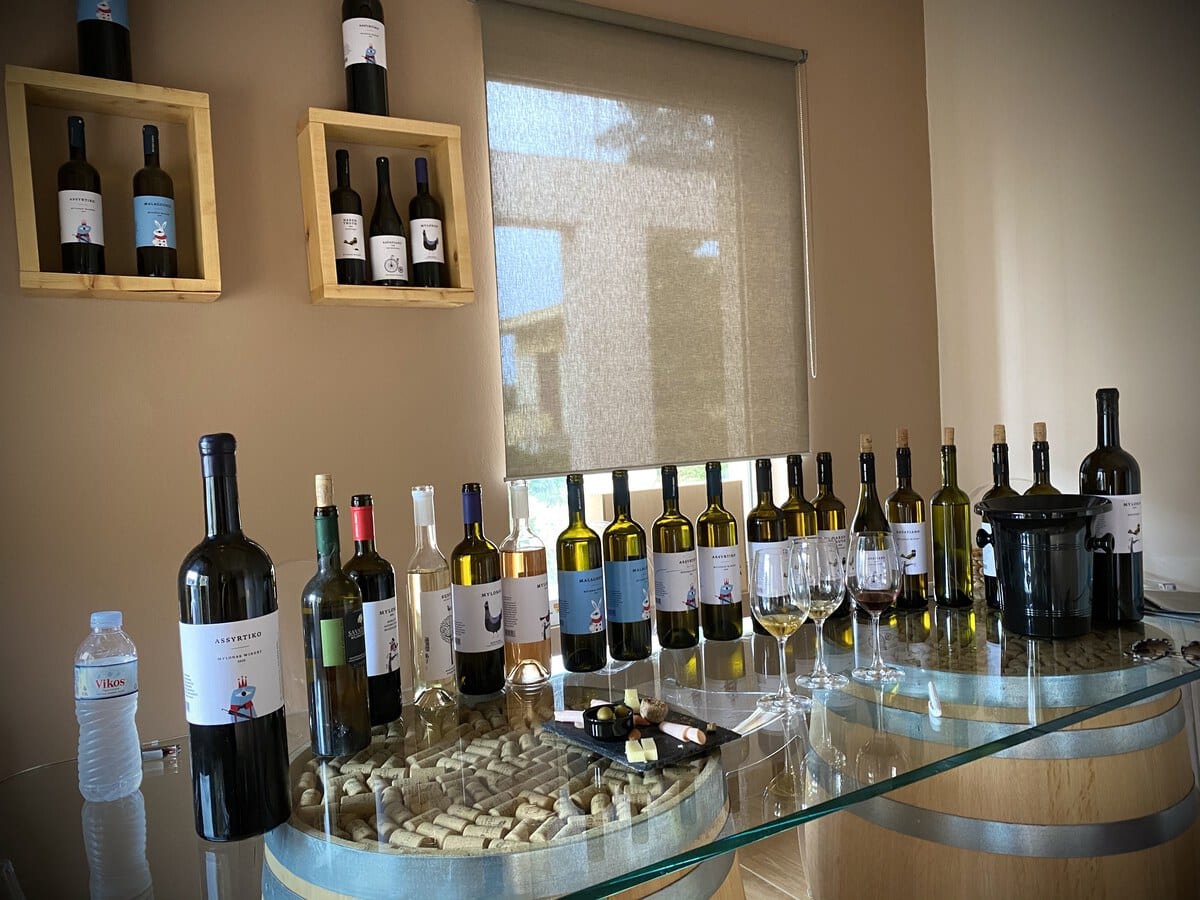
The 2020 Assyrtiko is floral, mineral and herbaceous. The 2019 one has a deeper bouquet. It’s more mineral and has a malolactic note to it.
The Malagousia 2020 is floral and aromatic, as I would expect from this grape variety. The 2019 vintage has a smokey touch and is round on the palate.
But let’s go back to Savatiano
All four are very nice bottles. Yet I see why at Mylonas they are betting hard on the Savatiano card.
This grape variety has an interesting profile when drunk young. And with age it evolves into lovely, round, complex stuff.
The raw material is there and its quality is clearly excellent.
There is also plenty of experience to treat those grapes as they deserve. Plus at Mylonas they have the guts to play around and experiment with an underdog variety.
It’s now a matter of educating the public to give Savatiano a chance. And maybe even to try it after a few years in bottle.
I understand it’s a difficult sell in the country of Malamatina Retsina. In Greece, where the general public thinks white wine “has expired” if older than last year vintage.
But I do appreciate Mylonas effort to educate and spread the word among his fellow citizens. If they don’t get it this lovely stuff will all continue to be sold abroad. Once again, foreigners will enjoy yet another great Greek product, disregarded at home!
